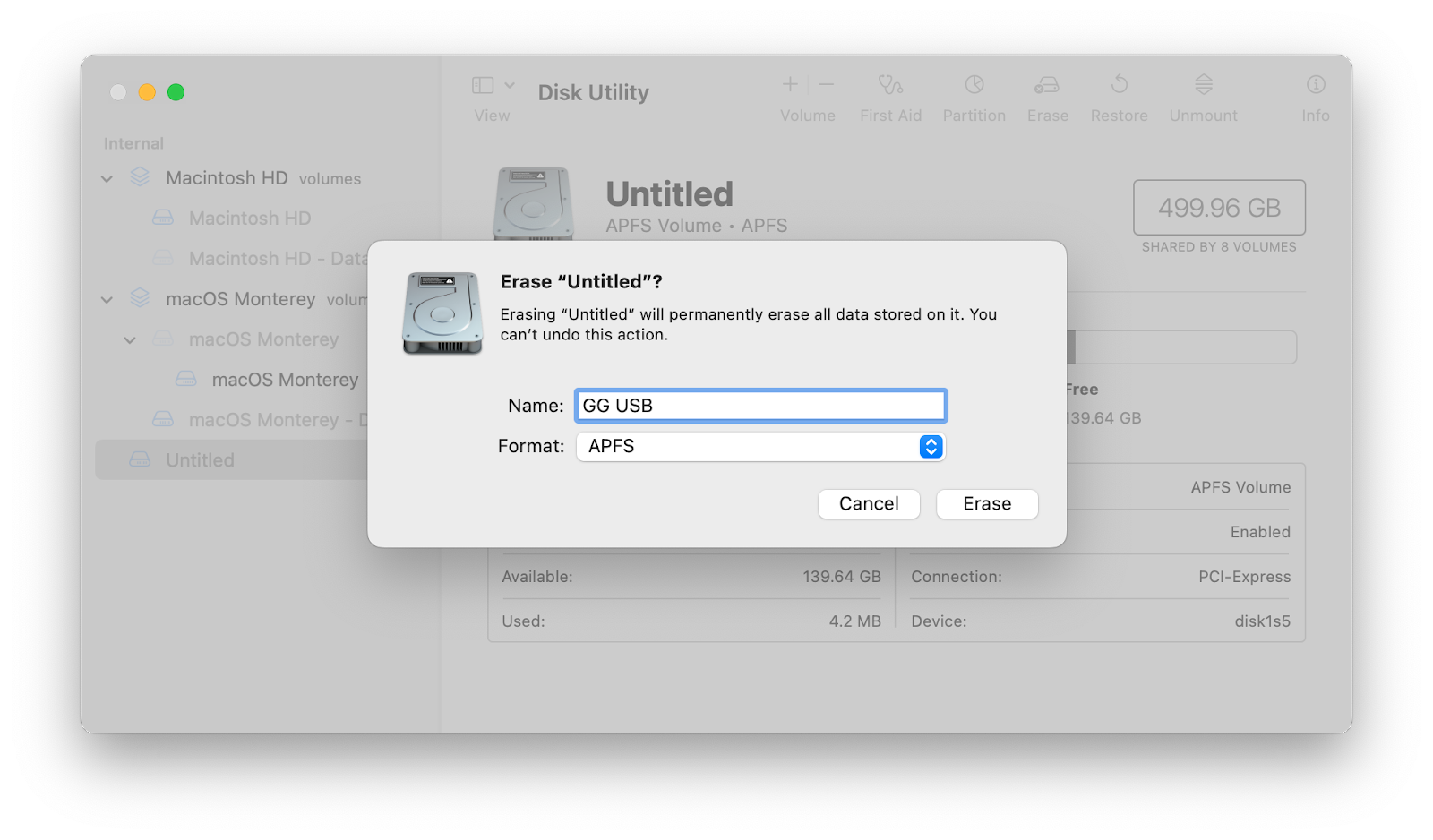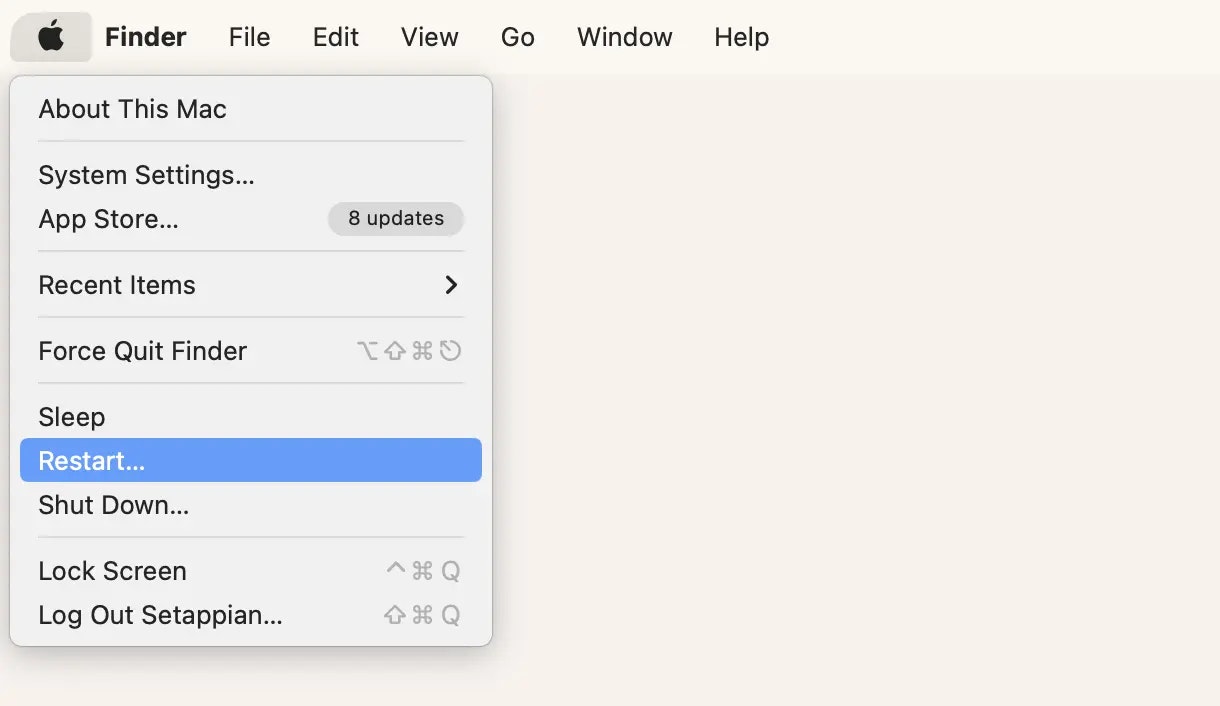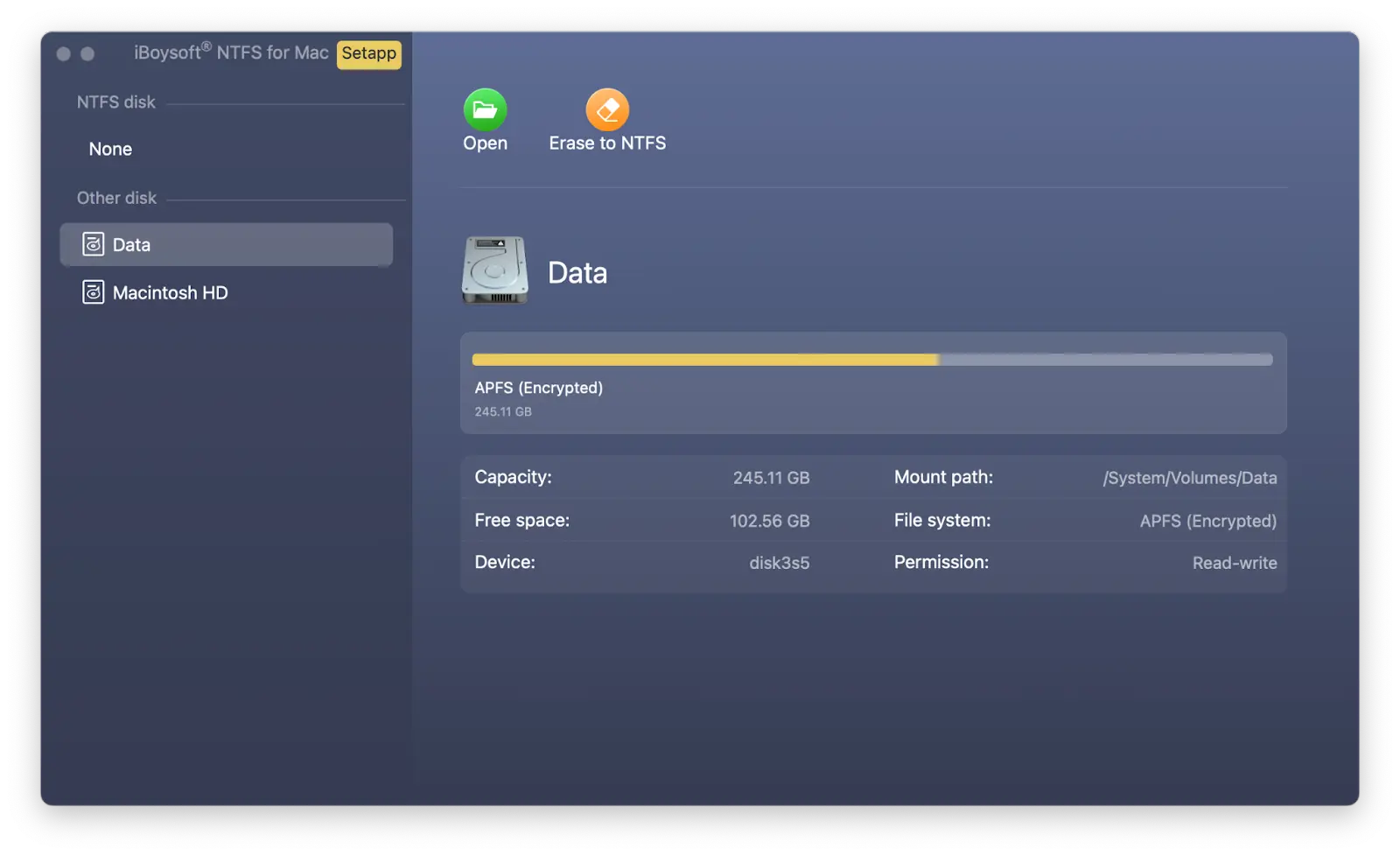How to access an external drive that's not recognized on a Mac
Most of the time, when you connect an external hard drive to your Mac’s USB port, you soon see it mount on the desktop. Apple likes to ensure these are easy to find, so they also appear in the Finder in the left-hand column under Locations.
However, sometimes, an external hard drive doesn't show up. It’s annoying, especially when you need to transfer something right then. And besides, there can be a risk that data on the external USB pen, hard, or flash drive is corrupt, which means you can’t transfer what you need between devices at all.
Corrupt data can be one reason your Mac won't recognize an external drive, but there are other reasons too. Let’s take a look at why this is happening and how you can fix the external hard drive not showing up problem.
| Problem | Solution |
|---|---|
| Drive not showing up | Check connection and cable |
| USB port issue | Try a different USB port |
| Drive not visible in Finder | Finder > Preferences > General > External disks |
| NVRAM issue | Shut down > Press Option + Command + P + R for 20 seconds |
| Disk not mounting | Disk Utility > Select drive > Mount |
| Incorrect format | Disk Utility > Erase > Choose APFS format |
| File system problem | Disk Utility > First Aid > Run |
| macOS issue | Apple menu > Restart |
| Recovering lost data | Use Disk Drill |
| Cannot write to NTFS drive | Install iBoysoft NTFS for Mac |
Why your Mac does not recognize external hard drive
Let’s say you’ve encountered the problem of SSD not showing up. There could be a few reasons why SSD isn’t making an appearance (just as any other external drive), the most common being:
- There’s something wrong with the cable.
- There’s a power supply problem.
- Your drive has been corrupted or broken.
- The drive is not readable on macOS.
- NTFS read-only problem.
With M1 chips, the threat is very real due to the fact that it’s impossible to boot your Mac if your internal SSD fails.
How to fix an external disk drive that won't show up on a Mac
While it’s impossible to instantly figure out why an external disk drive is not showing up, there are some working methods that will help you get things right. Let’s go through the checklist.
Check whether the drive is properly plugged in
It sounds obvious, but since the connection relies on a wire — either a USB cable or HDMI cable — if it’s not connected properly, the drive won’t appear on your desktop.
Assuming it’s plugged in correctly, not wobbly or loose, the cable could be at fault. Try connecting the same device with a different cable.
Change USB ports
A damaged USB or flash drive port on your Mac could be the reason why external drives won’t show up. If you’ve got another port, try connecting the device to that one.
Edit Finder Preferences
When you connect a drive to Mac, it should appear in Finder under Locations. What to do if external hard drive is not detected? In most cases, when Finder doesn’t see your drive, you just have to change a few things in Preferences. Let’s see how you can fix this.
- Go to the Finder menu > Settings.
- In General, click on External disks to ensure that from now on it shows on the desktop.
In the Sidebar tab, you can choose which folders and devices will be shown in the left-hand column of the Finder window.

Reset NVRAM
NVRAM has to do with storing different settings, including the startup disk selection settings. This is why resetting NVRAM can help fix the problem with those settings.
To reset NVRAM on an Intel-based Mac:
- Shut down or restart your Mac.
- Switch it back on and immediately press these four keys together for at least 20 seconds: Option, Command, P, and R. It should look as though your Mac has started again.
- If it has, release the keys when you hear the second startup chime. Hopefully, the hard drive has shown up now.
Check Apple’s Disk Utility
You’ll find Disk Utility within System Preferences or via Spotlight. If the external drive is visible in Disk Utility, select it and click Mount, which should make it visible on the desktop and in the Finder menu.
Change the format of your hard drive
Not every external drive is optimized for Macs. It could be that you are trying to connect something only fit to interact with Windows devices, such as NTFS. If you’ve got a PC or laptop, it’s worth connecting and seeing if you can access the files through another device.
The best way to look for an incorrectly formatted drive on Mac is to go to Apple (in the top toolbar menu) > About This Mac > Storage. See if the external drive shows up here. For more information, go to the same menu option, then select System Report.
Mac not reading external hard drive (or rather not writing to it) is normal in case you’re connecting an NTFS drive. The simple fix is to install iBoysoft NTFS for Mac, an app that unlocks read and write support for NTFS drives on Mac. If you’re dealing with some other unsupported drive format, you can try and change its format. Note that you’ll have to erase all the data on that drive first.
- Connect your external drive.
- Open Disk Utility, select the drive, and click Erase.
- Choose the right format under Format (APFS is standard for macOS) > Erase.

Run First Aid
The most direct reason your external hard drive is detected but can't be opened is the file system problem. If your drive is having such problems, you can try to fix them yourself with First Aid and therefore get access to your files.
First Aid tool will check the disk for errors and then attempt a repair as needed. It helps to verify and repair a range of issues related to startup HD and external drive problems. If you are able to fix the hard drive or SSD in your Mac (or any external drive) using Disk Utility you will hopefully be able to recover your files.
To run Fist Aid on an external hard drive:
- Open Disk Utility. You can search for it using Spotlight or via Finder > Go > Utilities.
- Select your external hard drive, access the First Aid tab, and click Run to start running diagnostics.

Reboot your Mac
Hard disk not detected in Mac can be a macOS issue. Hopefully, some data damage can be fixed by restarting your Mac. Go to the Apple menu > Restart. Or press and hold the power button and, when a dialog box appears, click Restart or press R. Rebooting your Mac essentially clears your macOS’s memory and starts it up fresh.

How to recover data from a crashed drive
If you went through all the steps and weren’t able to fix Mac not detecting external hard drive, your drive truly is broken or formatted using a file system that the Mac cannot read — in this way you have to recover data from a damaged disk drive.
Thankfully, there is an app for that. Disk Drill is the world’s premier data recovery software for Mac. Powerful enough to retrieve long-lost, mistakenly deleted files from Macs, external hard drives, USB drives, and camera cards.
Here’s how to recover files with Disk Drill:
- Connect your drive to Mac.
- Quit all other applications on Mac, especially those that may be trying to access the external drive (e.g. iPhoto, Words).
- Open Disk Drill.
- Click on the external drive that you are trying to recover files from. If it has partitions, you will see all of them. If, however, you still don’t see any volume to the external drive then you may need to try some of the steps above again or read the Disk Drill Scanning FAQs.
- Scan the drive for lost files.
- Preview the scan results and once you’ve found the files you want to recover, click Recover.
Disk Drill does have other ways to recover lost files but assuming there are no complications, this method is the most effective.

How to fix external drive NTFS read-only problem
External hard disk detected but not opening? As we’ve mentioned before, one common reason your Mac isn’t recognizing the hard drive is the file format. Windows uses NTFS file formats, while Macs, up until the introduction of Sierra, have used HFS+. Now, Apple has introduced the Apple File System (APFS) for newer operating systems.
If you connect an NTFS drive, your Mac will be able to read it but not edit it. This means you can’t really complete your task (move, copy, or delete any files) as long as you experience the read-only problem. There’s an easy way to fix this with iBoysoft NTFS, an app that enables full read/write support for NTFS drives on Mac.

A few more tips on getting your files back
- Macs and third-party apps that look after Macs, such as Disk Drill and iStat Menus come with a S.M.A.R.T. (also known as Self-Monitoring, Analysis, and Reporting Technology) status monitor. If a SMART check reports errors, then it could mean the hard drive is at risk of failing completely. Within Disk Utility and Disk Drill, there are several solutions for this: Repair Disk Permissions and Repair Disk. If neither of them works, it’s recommended to back up all of the data from the disk, erase it, then run a SMART check again. The external hard drive should show up as Verified.

- Partitions can get lost within hard drives, temporarily hiding all of the information contained within. Disk Drill can help to identify and restore this information.
- Within Disk Drill, you can restore data when a hard drive is damaged or add formatting, which is also something Disk Utility can help with.
- CleanMyMac, another useful app available from Setapp, can help you identify external hard drive errors and repair them. It is an essential tool worth trying when you’re having external hard drive difficulties.

- A trick that can help you fix hard drive not showing up on Mac is to replace it with cloud storage. You can mount cloud storage as a local drive on your Mac. By connecting Google Drive, Dropbox, or Amazon to your computer, you get more space for securely accessing and sharing files. For your ease, add cloud drives to Finder with CloudMounter so that you keep them close at hand. You can read detailed instructions on managing cloud storage as local drives here.

Hopefully, we’ve covered the topic so you don’t have to google “external hard drive disappear from the computer” ever again. There are lots of potential solutions for a Mac not reading/writing an external hard drive. If you’re trying to connect an NTFS drive, do it with iBoysoft NTFS for Mac. If you need to add cloud storage, CloudMounter will help you. Most importantly, you’ll never have to worry about a crashed or corrupted external drive because Disk Drill will help you recover all the data stored on it.
iBoysoft NTFS, CloudMounter, Disk Drill, and other powerful apps such as CleanMyMac X are all available via Setapp, a app subscription service that brings you 240+ apps for your tasks in one subscription.
FAQ
How to find external hard drive on Mac?
After you’ve plugged in your external hard drive, open Finder and look for the drive under Locations. Is your Mac not recognizing external hard drive? Make sure it’s set to show up under Locations: Finder > Preferences > General > select “External disks.”
Why is my external hard drive not readable on Mac?
The most common issue is your drive being formatted incorrectly. In this case, you’ll need to change the format of your drive using Disk Utility. Other reasons might include issues with power supply, faulty cable, and your drive being corrupted or broken.
What does “Corrupt Disk” mean in Disk Utility?
Hard disk not detected on Mac or not mounting properly can mean it’s been corrupted. Corrupt disk error usually shows up when your system can’t finish writing to the drive and the data stored on that drive becomes inaccessible. The best way to try and rescue your data is to use data recovery software such as Disk Drill.
What to do if my Mac shuts down when I connect a hard drive?
Sometimes, your Mac would shut down if it can’t supply the external drive with the required amount of power. It’s basically the opposite of the insufficient power supply issue. In this case, you might need to connect an extra USB hub or any other source of power. If you have an Intel-based Mac, you might also try to reset the SMC.






